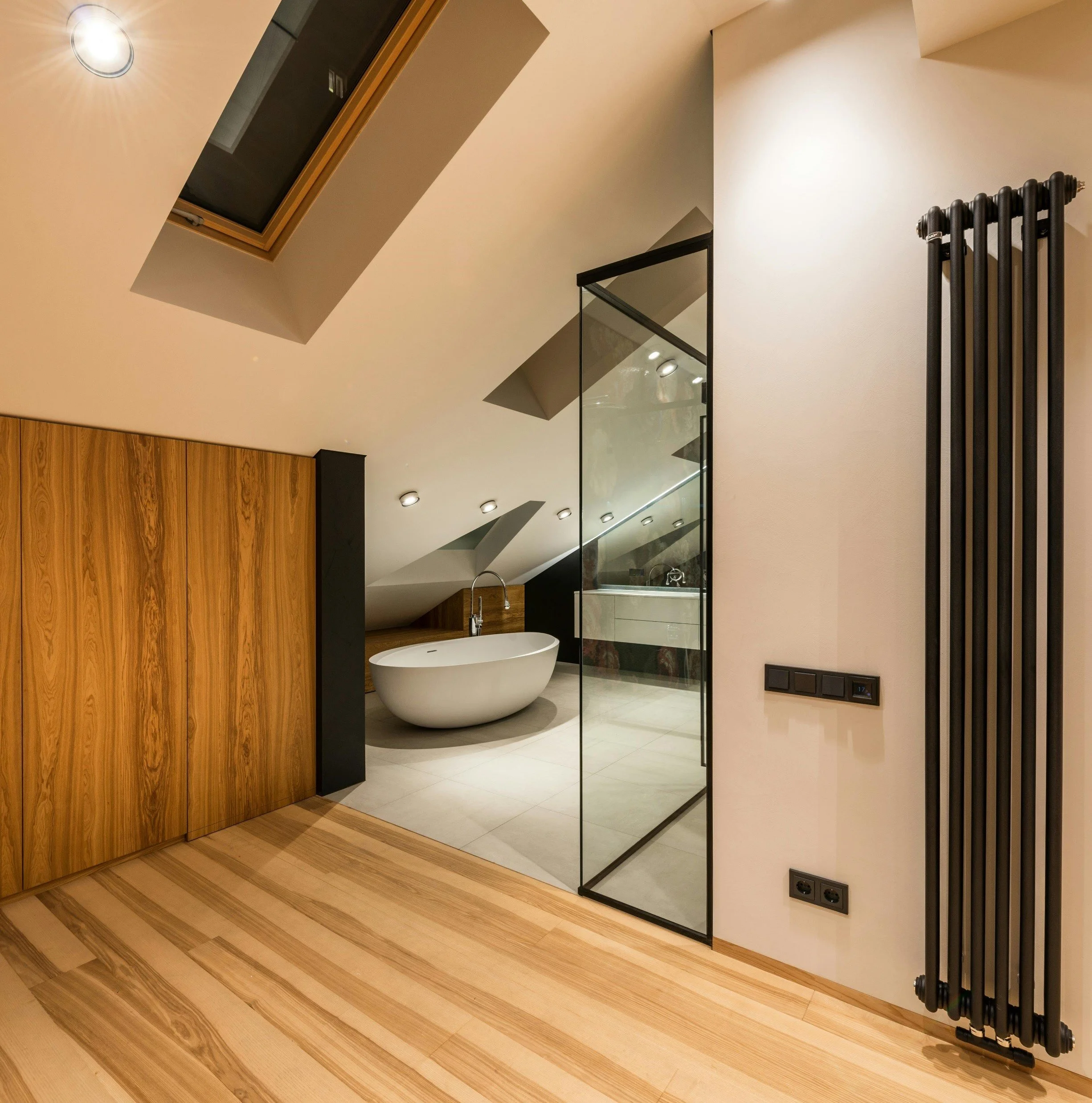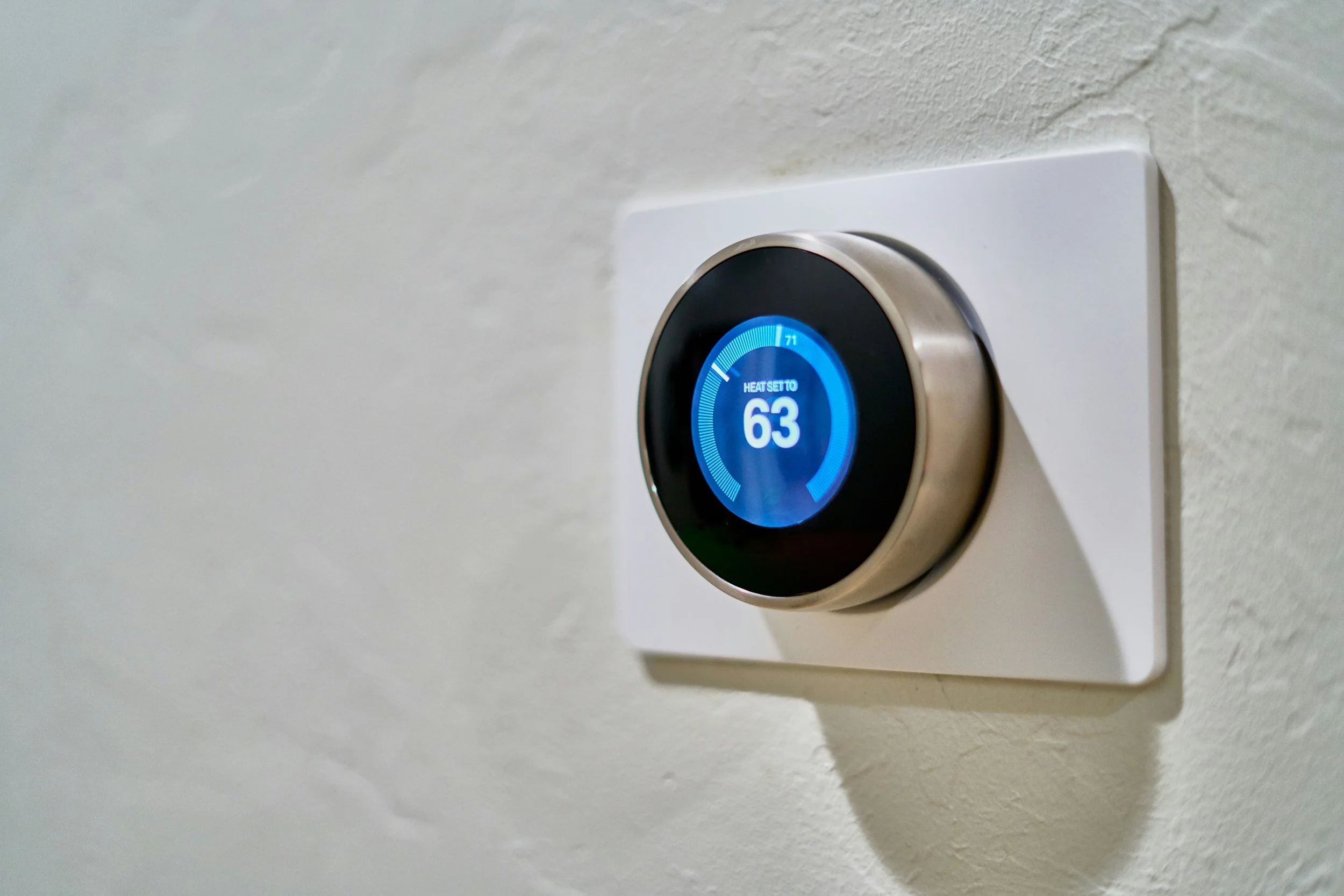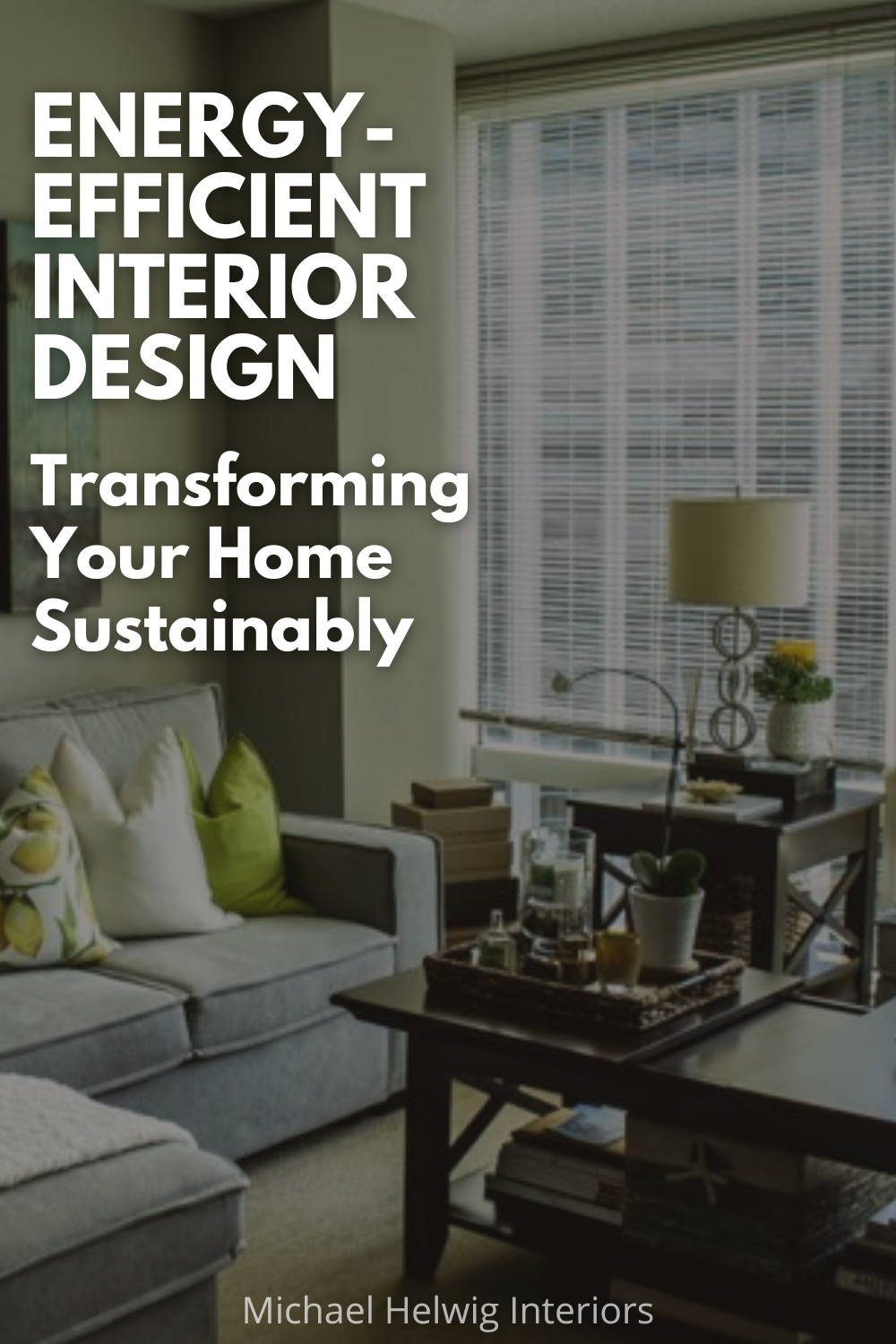Home renovation is something that every homeowner considers at some point. Maybe you’re thinking about a fresh coat of paint, new decor, changing your countertops, and so on.
But have you ever thought about making your home more energy-efficient in the process? Perhaps not, or if you have, it might be the least of your priorities.
According to a study, certified energy-efficient homes often sell for up to 2% to 8% more than their non-certified counterparts in most markets. Beyond the possibility of increasing the value of your home, better energy efficiently can also reduce energy bills, elevate comfort, and contribute to a healthier home. (1)
To help you get started, here are some interior design tips to make your home more energy efficient:
Insulate your home properly
Insulation is like a cozy blanket for your home; it helps keep the warm air in during the winter months and the cooler air in during summer. Without it, your HVAC works harder to maintain a comfortable temperature, leading to more strain on your systems.
Erik Mclean
Now, here’s the question: Where can you insulate? Let’s start with the basics:
Attics
The attic can be a big culprit when it comes to losing or gaining heat. Adding insulation up there helps keep the temperature steady.
Max Vakhtbovycn
You’ve got a few options here, like blown-in cellulose, fiberglass rolls, or spray foam, depending on what works best for you and your budget.
Walls
Did you know that insulation doesn’t just benefit exterior walls? Your interior walls can become more energy efficient with insulation too. In existing homes, options like blown-in insulation can be added through small holes drilled into the walls.
Phil
New constructions or major renovations, on the other hand, allow for the installation of fiberglass batts, rigid foam, or spray foam between wall studs.
Floors
Insulating floors above unheated spaces such as garages or crawl spaces also helps keep the warmth from escaping and prevent cold drafts.
Vlada Karpovich
When you insulate between floor joists, you’ll improve the comfort and energy efficiency of your floors greatly.
Basements
Basements can be tricky, can’t they? They often deal with dampness and are prone to water accumulation from outside. This of course can lead to problems like mold, mildew, and musty odors. But don’t worry! There’s a cozy solution: wrapping your basement walls and ceiling in insulation.
Gül Işık
This helps regulate temperature, which can prevent moisture from affecting the space. It also reduces energy loss and improves the overall comfort in your basement.
Choosing the right insulation comes down to your needs, budget, and the condition of the space. But if it’s not your area of expertise, it’s a good idea to hire a professional to ensure the installation process is done properly.
Upgrade to sustainable windows
Have you ever noticed your windows feeling drafty or fogging up? These can be a real headache, as they no longer provide the best thermal protection. That said, updating your windows with sustainability in mind should be on the list.
Andrea Piacquadio
Consider aluminium awning windows, which are not only stylish but also highly functional. They open outward from the bottom, creating a canopy that shields your home from rain and snow while allowing fresh air to circulate. Another great choice is the double-glazed design. It consists of two panes of glass with a gap in between that serves an insulating purpose.
Windows are your connection to the outside world, but sometimes, they can be more of a barrier than a bridge. Outdated or inefficient windows can let in drafts, allow condensation to form, and fail to provide adequate insulation. Upgrading your windows with modern designs and materials can transform them from a weak link in your home’s energy efficiency to a strong asset.
Go for energy-efficient lighting
We all know how a well-lit home can make the entire space look better; it’s one of the best interior design tips for creating a warm and inviting vibe. From chandeliers to the bedside lamps, good lighting sets the mood and highlights every corner. It’s nice to see those beautiful fixtures, but did you know that they account for about 15% of your home’s electricity use? (2)
Jean van der Meulen
Switching to a light-emitting diode or LED can save you about USD$225 per year on your energy bills. The best part? These bulbs last much longer than traditional ones, which means you’ll spend less on replacements over time. That’s the real benefit when you see how much you’re cutting down on expenses while also reducing your carbon footprint. (2)
Want to make things even better? Install dimmer switches and motion sensors, too. Dimmer switches let you adjust the light to just the right level for whatever you’re doing. Meanwhile, motion sensors automatically turn the lights on when you enter a room and off when you leave. Updates like these can add up to big savings.
Select eco-friendly appliances
Looking for a new refrigerator, dishwasher, or washing machine? Just pause for a moment and think about going for eco-friendly options.
Mark McCammon
Professional interior designers often recommend choosing stylish and high-efficiency appliances. They want their clients to enjoy the perfect blend of form and function.
Look for models with the Energy Star label, as these meet strict guidelines set by the U.S. Environmental Protection Agency and the Department of Energy. Apart from that, you’re also eligible for rebates and federal tax credits that can make your purchase more affordable. That’s a smart investment, right? (3)
Energy grants from governments and organizations can help reduce electricity bills by covering costs for energy-efficient upgrades like appliances, insulation, or solar panels. Fairway Energy explains the steps to apply for an energy home grant to help you save money and support environmental sustainability.
Optimize your heating and cooling systems
If you like to “set it and forget it,” then a programmable thermostat is a smart move for managing your heating and cooling systems. This device lets you set different temperatures for various times of the day. For example, you can program it to lower the heat while you’re asleep or away at work, then warm things up just before you wake or return home. Some advanced models can also be controlled remotely via smartphone apps.
Dan LeFebvre
But a good thermostat is just the start. Keep your HVAC system running smoothly by cleaning or replacing dusty air filters and giving it a checkup now and then. Who doesn’t love the idea of breathing cleaner air?
Use natural light more
Maximize the use of natural light in your home to reduce the need for artificial lighting. It’s free anyway!
Max Vakhtbovycn
So, open your curtains and arrange your furniture to catch more daylight. Try placing your favorite reading chair near a window or angling your desk to get the best natural light for work. Light paint colors can also help brighten rooms—think soft whites, pale yellows, or gentle blues.
If you’re feeling adventurous, consider installing bigger windows or skylights to flood your home with sunshine. It’ll surely feel great to wake up to sunbeams streaming across your bedroom or to enjoy a sunny breakfast in the nook.
All these ideas not only make your home feel cozy and welcoming but might also trim your power consumption. You’ll find yourself reaching for the light switch less often, especially during those long summer days. Above all, there’s just something mood-boosting about a naturally bright home, right?
In summary
So, there you have it—simple ways to make your home both stylish and energy-efficient. It’s amazing how a few thoughtful updates can not only make your home more comfortable but also help the environment and save you some cash. Whether you’re sprucing up your insulation, upgrading your windows, or switching to LED lights, every little bit counts. Plus, you’ll get the satisfaction of knowing you’re doing your part to create a greener world. So why not take a step towards an eco-friendlier home today? Your future self—and the planet—will thank you!
References
1. “Better Resale Value”, Source: https://www.energystar.gov/newhomes/features-benefits/better-resale-value
2. “Lighting Choices to Save You Money”, Source: https://www.energy.gov/energysaver/lighting-choices-save-you-money
3. “What “Does the ENERGY STAR Label Mean?”, S” Source: https://www.energystar.gov/products/ask-the-experts/what-does-energy-star-label-mean
Read Next:
Wine Glass Room: Create a Stylish and Functional Wine Space
Dreaming of the perfect wine glass room? Learn how to blend style and functionality with tips on space planning, storage solutions, and more. Whether you're a casual sipper or a serious collector, learn how to create a cozy, elegant space that showcases your collection and enhances your wine experience.
Join the Fun!
If you enjoyed this post and you want to keep seeing my weekly blog, the best way to do that is to subscribe.
You can subscribe by downloading my 11 Secrets Only Designers Know to Make Your Space Rock. If you’re curious about how decorators and designers make a home look magazine ready, you’ll love taking a gander at these 11 secrets. You’ll learn how to style your room from the floor up and it will work for ANY space you have.
I write about small space design and decorating, sustainable furniture options, positive self care and a variety of do-it-yourself home décor.
I’d love to connect with you!
“Michael Helwig was top-notch, very professional and responsive to my needs. He allowed me time to explore ideas and try out a variety of combinations until we found the perfect fit. Michael provided detailed information and offered beautiful ideas to make my dream living room become a reality. The furniture he sourced has totally transformed my living room space. Everyone that has seen my new living room has one word, WOW! A special thank you to Michael for a wonderful experience.”
“Michael was very knowledgeable and guided us, with great patience and good humor, through the process of designing our dining room and helping us find the perfect sleeper sofa. He offered really helpful advice when we asked questions - which was often - but at no time did we ever feel pushed. He helped me when I felt like I couldn’t make one more decision. When my new furniture finally arrived I realized everything down to the pillows was perfect. I couldn’t be happier!”
Rafael Nunez
Michael is Principal designer and blogger at Michael Helwig Interiors in beautiful Buffalo, New York. Since 2011, he’s a space planning expert, offering online interior e-design services for folks living in small homes, or for those with awkward and tricky layouts. He’s a frequent expert contributor to many National media publications and news outlets on topics related to decorating, interior design, diy projects, and more. Michael happily shares his experience to help folks avoid expensive mistakes and decorating disappointments. You can follow him on Pinterest, Instagram and Facebook @interiorsmh.



















